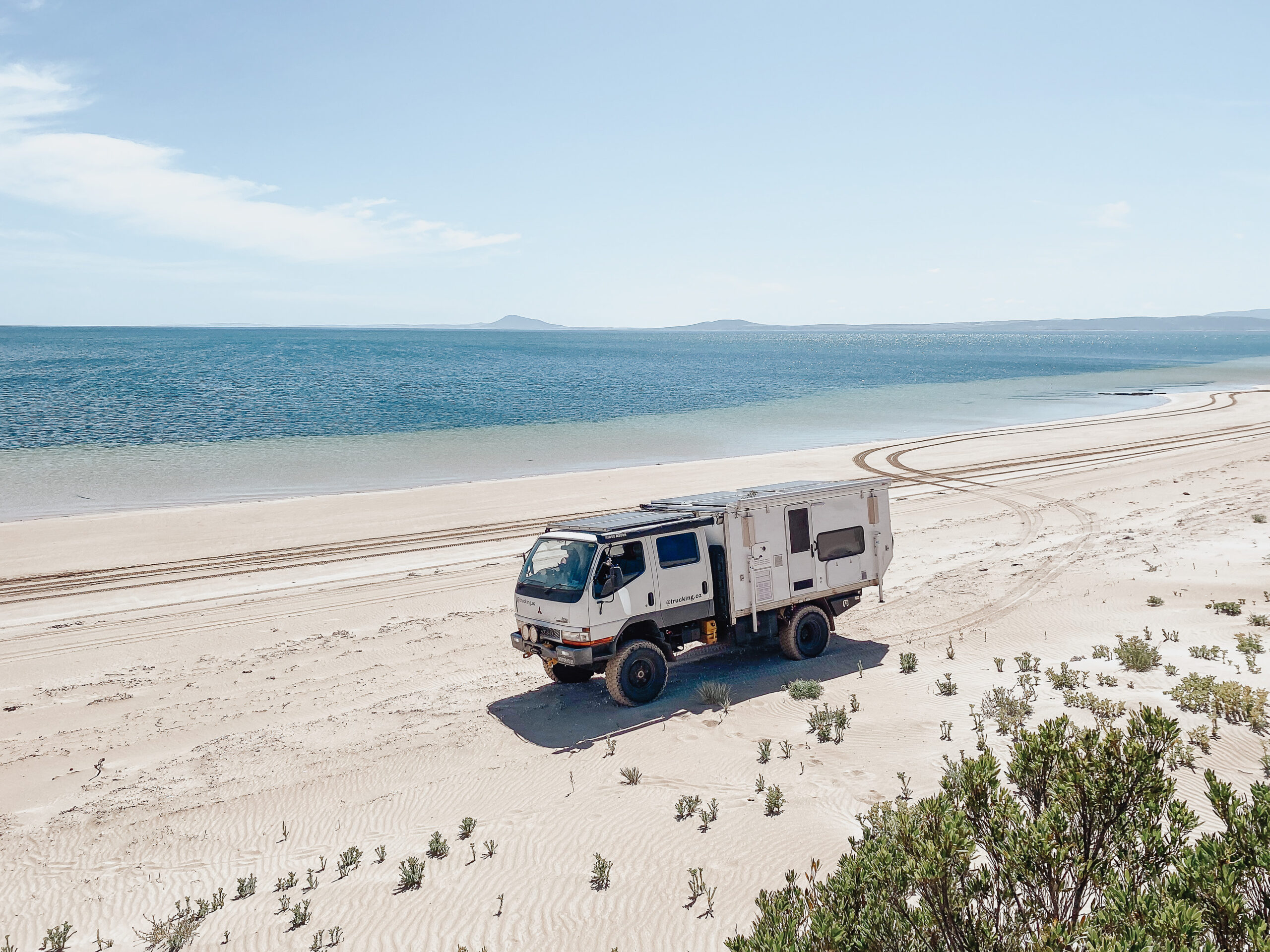Japanese manufactured vehicles are the best—end of discussion. Okay, I accept that’s not always the case, but I bet you know at least one person who drives a Stone Age Toyota, Nissan, Honda, Mitsubishi, Isuzu, Mazda, or Suzuki that seemingly never breaks down, despite being redlined daily, rusted beyond fathom, or half-way up the Andes. In fact, my dad had a Toyota Hiace work van for 30 years; it covered over 300,000 miles and only broke down once. Needless to say, I’m a big fan, and one of my absolute favourite Japanese vehicles is the Mitsubishi Canter 4×4.
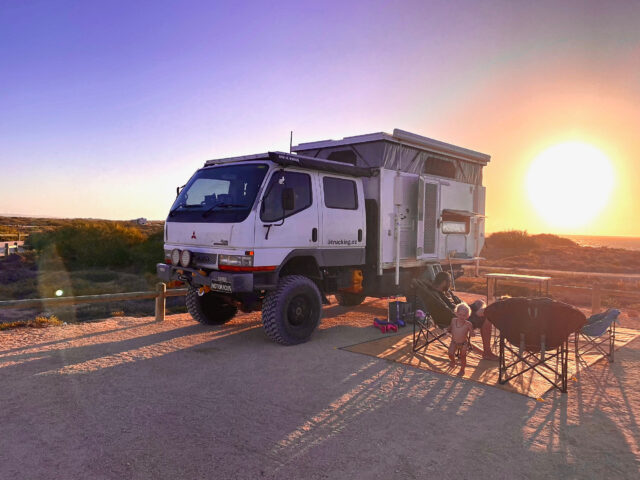
Trucking OZ owns one of the most impressive Canters I’ve ever seen, and it was a pleasure sitting down for a conversation with Ori, the brains behind the build. Ori and his family are currently on the trip of a lifetime, spending an entire year overlanding some of the most extreme and remote locations in Australia. Ori has owned—wait for it—56 vehicles, a number of which were overland builds, and is subsequently a wealth of knowledge on the subject and a Jedi with the spanner. In this interview, we discuss the reasons for choosing the Canter 4×4, which might just be the perfect overland home on wheels, whilst looking in detail at the modifications and upgrades that make this particular example outstanding.
Introduction
My wife and I have known each other since we were 15, and we’ve always loved four-wheel driving. We’ve been planning our current trip around Australia for over five years, and we wanted to be able to do the adventure before the kids were at school. Thus, we’ve taken a year off for this trip; my wife’s on service leave, and my work let me have four months off to build the truck (I completed almost all the work myself; I’m an automotive electrician by trade).

Ultimately, we just love being in the wilderness camping and the freedom it provides. Australia has so much to offer, but many landscapes are only accessible with a four-wheel drive. I’ve actually owned 56 cars (I had my own workshop and often bought vehicles from clients, which I modified for adventure). I built a number of overland vehicles, and you quickly realise there’s no perfect setup. That said, our current rig is almost ideal for our family’s needs whilst being a platform that can reach extreme locations.
When did your love of overland travel begin?
It’s hard to pinpoint, but we’ve always toured with friends, and I was forever driven to create the best possible setup. It evolved from camper trailers to vehicles with a lift-off canopy, and finally, larger trucks. In Australia, we have a big issue with vehicles being overweight, particularly when towing caravans, and insurance companies are clamping down on it. These trucks have a huge gross vehicle mass, so we can load them up and not worry. We weigh just under 6 tonnes as we sit right now, and I can still legally tow a 3.2-tonne caravan. We decided this time round that we wanted to visit some extreme areas and therefore didn’t want to tow a trailer, alternatively opting for the demountable truck-bed camper. Growing up, my family used to always take me camping, hence, overlanding has always been in my DNA. As soon as I got my license, I wanted to explore. Early on, I loved the build process because I didn’t have time around work to travel. Now I’m more focused on the experience. In the future, we’d love to ship the truck to other continents, but that will take some planning.
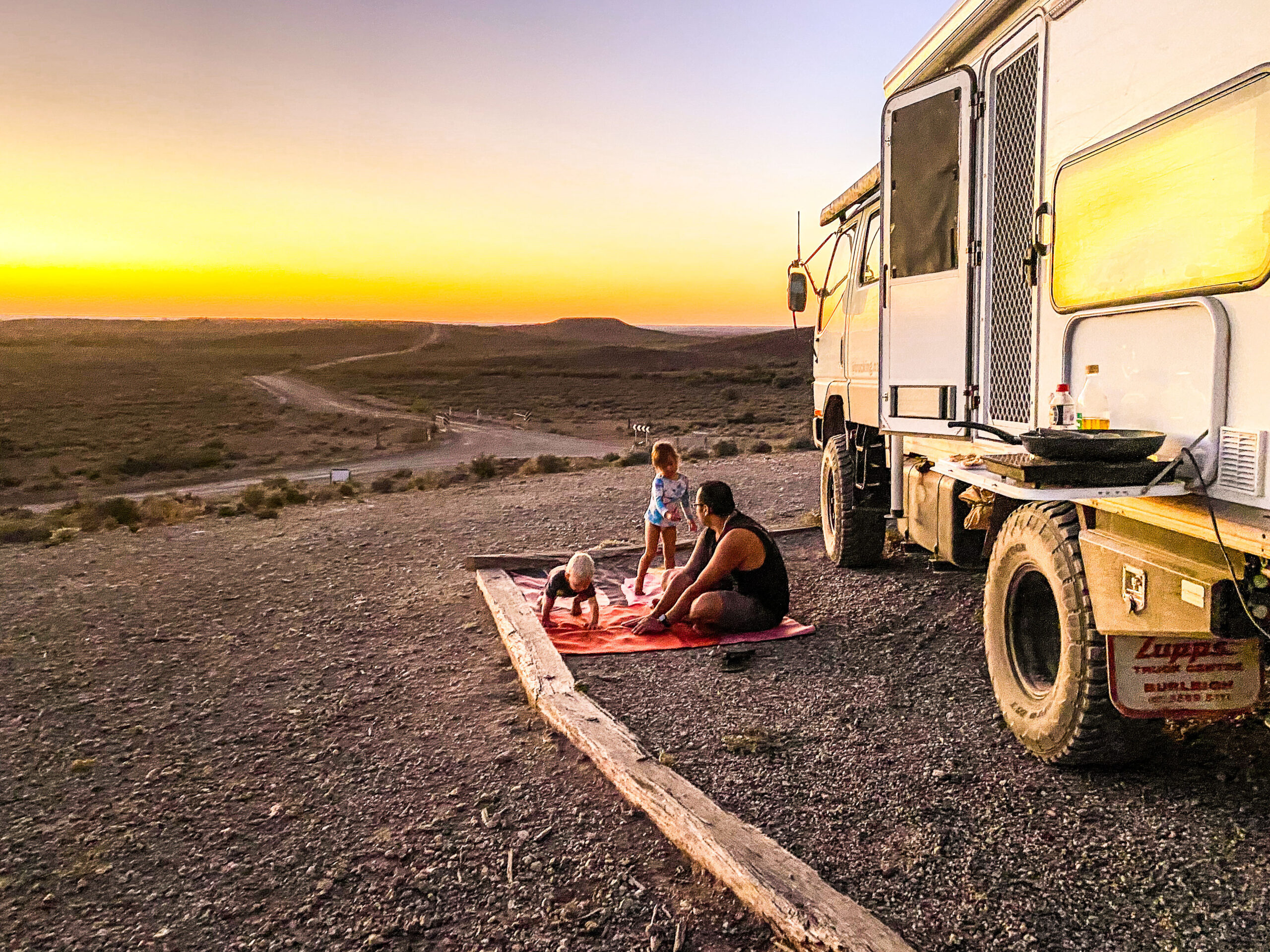
The Build
We purchased the Canter two years ago; it wasn’t running very well, so we got it cheap. The engine was “dusted,” something that’s common in Australia, where fine dust gets through the intake system and chews the inside of the engine apart. I fitted a new engine, turbo, fuel pump, injectors, etc., basically a full rebuild, and now it’s pretty bulletproof. The work was extensive but still cheaper than buying a new vehicle or a better condition Canter (not to mention low-mileage vehicles can still have issues). I like to buy something I know has problems and then work through the issues methodically, so I know everything has been done correctly. It took about a year to get everything sorted and get the truck to a point where I felt it was reliable enough to hit the road.

Why did you choose the Mitsubishi Canter Crew Cab 4×4?
The cost; they’re a fair bit cheaper than the other dual-cab trucks available. Additionally, the availability of parts, as the base vehicle is used all around the world (the Fuso brand is owned by Daimler, so parts are available worldwide). Finally, the Canter 4×4’s capability off-road is mind-blowing, especially with the 37-inch tires. We deleted the dual wheels on the back and replaced them with a super single, and it’s honestly unstoppable. Objectively, I’d say the Isuzu alternative is a slightly better truck overall, but they’re more expensive, and parts aren’t as widely available.
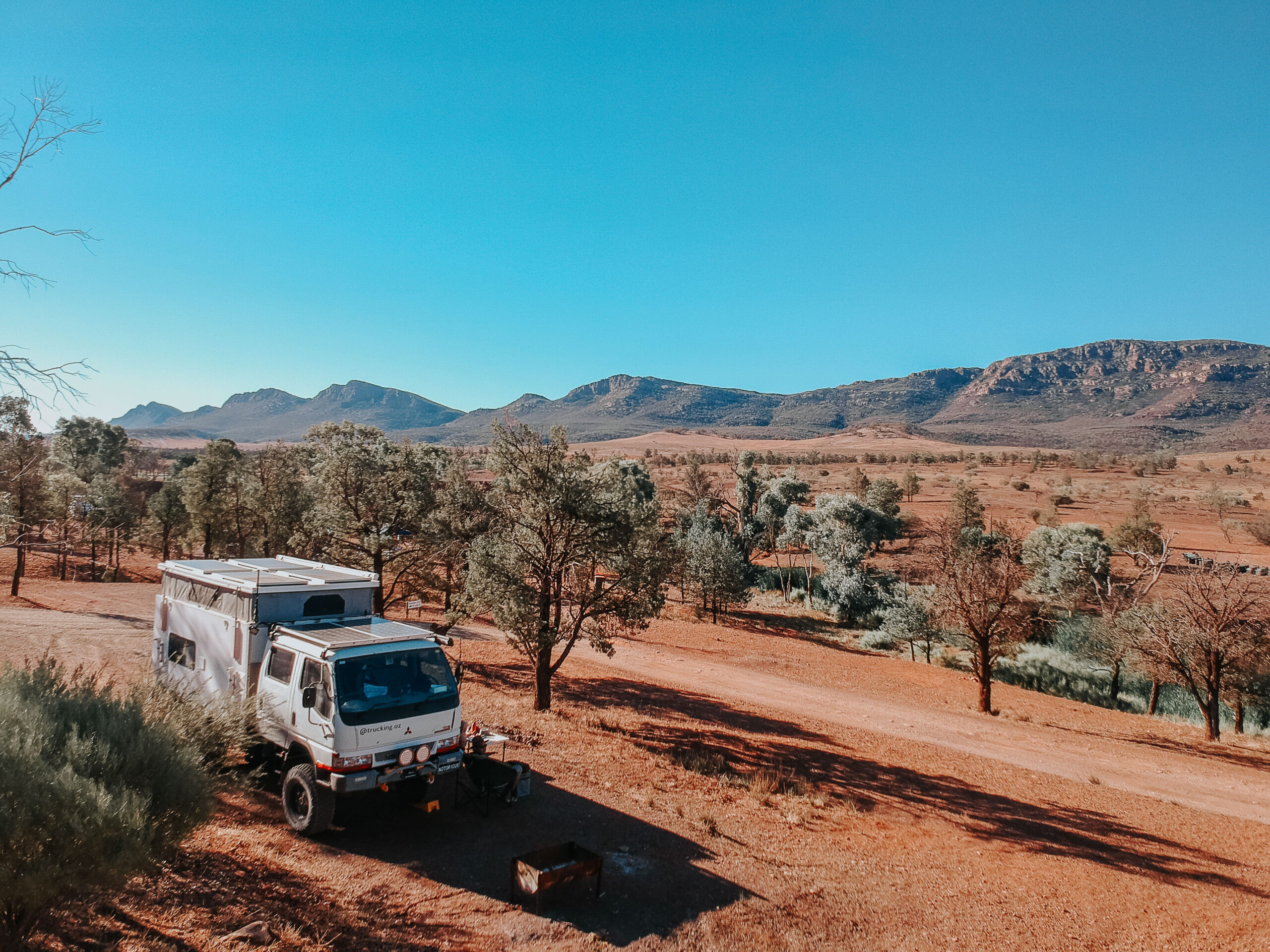
The Engine and Drivetrain
It’s a 4-cylinder, 3.9-litre turbo-diesel intercooled. It’s standard for the most part, but I’ve fitted a Steinbauer chip because, whilst these trucks are mechanically injected, the diesel pump is electronically controlled. This chip adjusts the fuel timing, which provides more power. I did have the option to fit a Cummins engine, but I figured before a big trip, it wasn’t a great idea. Conversions can work great, but they require many test miles to iron out the wrinkles. If you don’t have the time, you’ll be fixing things on the trip. The gearbox, transfer case, and differentials are all stock.
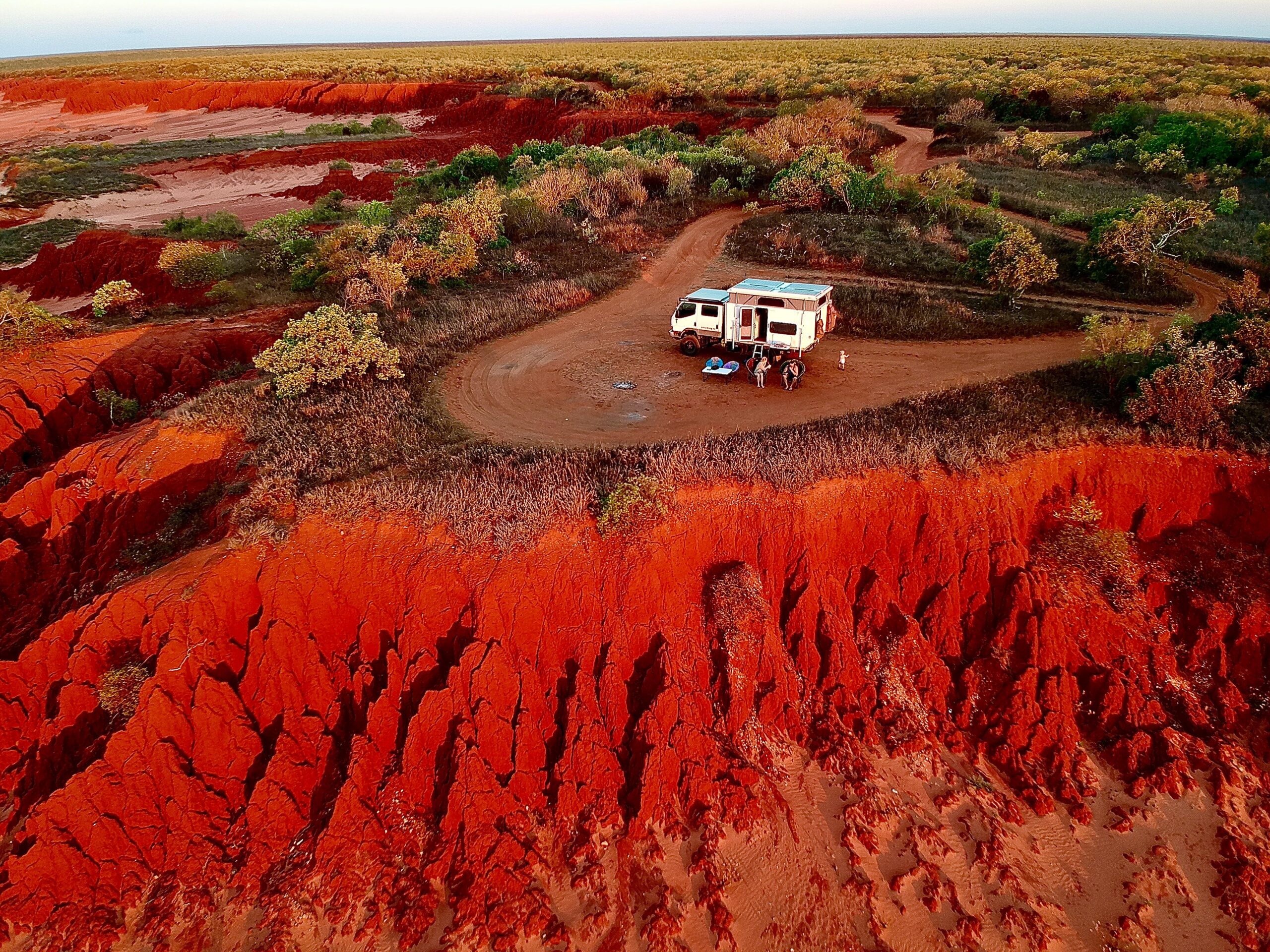
Suspension and Axles
The front of the truck has been converted to a parabolic leaf spring, which was made possible by modifying a Canter 2WD parabolic leaf to fit. In the rear, we have traditional leaf springs, but they’re heavy-duty, and raised to match the front ride height. We also fit airbags in the rear, and whilst we don’t need them for weight-bearing, we do use them for levelling the truck on uneven campgrounds (I don’t like levelling ramps). I also use them a little when we’re full of water and fuel, just to make the ride more comfortable. In terms of the shock absorbers, we went all out. We have 2.5-inch remote reservoir shocks in the front and rear, probably a little overboard, but they’ve been absolutely dependable across thousands of kilometres of corrugation. On these roads, I’ve noticed the shocks on my friends’ trucks are red hot, whereas ours are cool to the touch, despite the Canter weighing 6 tonnes and moving at considerable speed. Keeping the shocks cool is key because heat build-up is often what kills them. We decided to fit the biggest baddest shock we could, opting for Dobinsons, and I swear by them. They’re also three-way fully adjustable, which is ace. I can adjust the high-speed compression, low-speed, and rebound without any tools. This is essential for us, as once the camper is removed, the truck is very harsh riding, and we can quickly address this issue by adjusting the shocks.

Lockers
It has high and low range but no lockers. These are known for having one of the best-limited slip differentials (LSD) in the rear, so I never contemplated fitting a rear locker. I have considered fitting a front locker, but after completing so many challenging trails, there’s no need. I’ve rocked crawled in this, first gear, low range, and I’ve thought it would spin a wheel, but I think with the considerable weight on the tires, it always finds traction.
Wheels and Tires
We’re running 17-inch super singles in combination with 37-inch Hankook Dynapro tires. They’re a mud-terrain, but not super aggressive, more like an all-terrain. The aggressive sidewall is really good when aired down and provides endless traction.
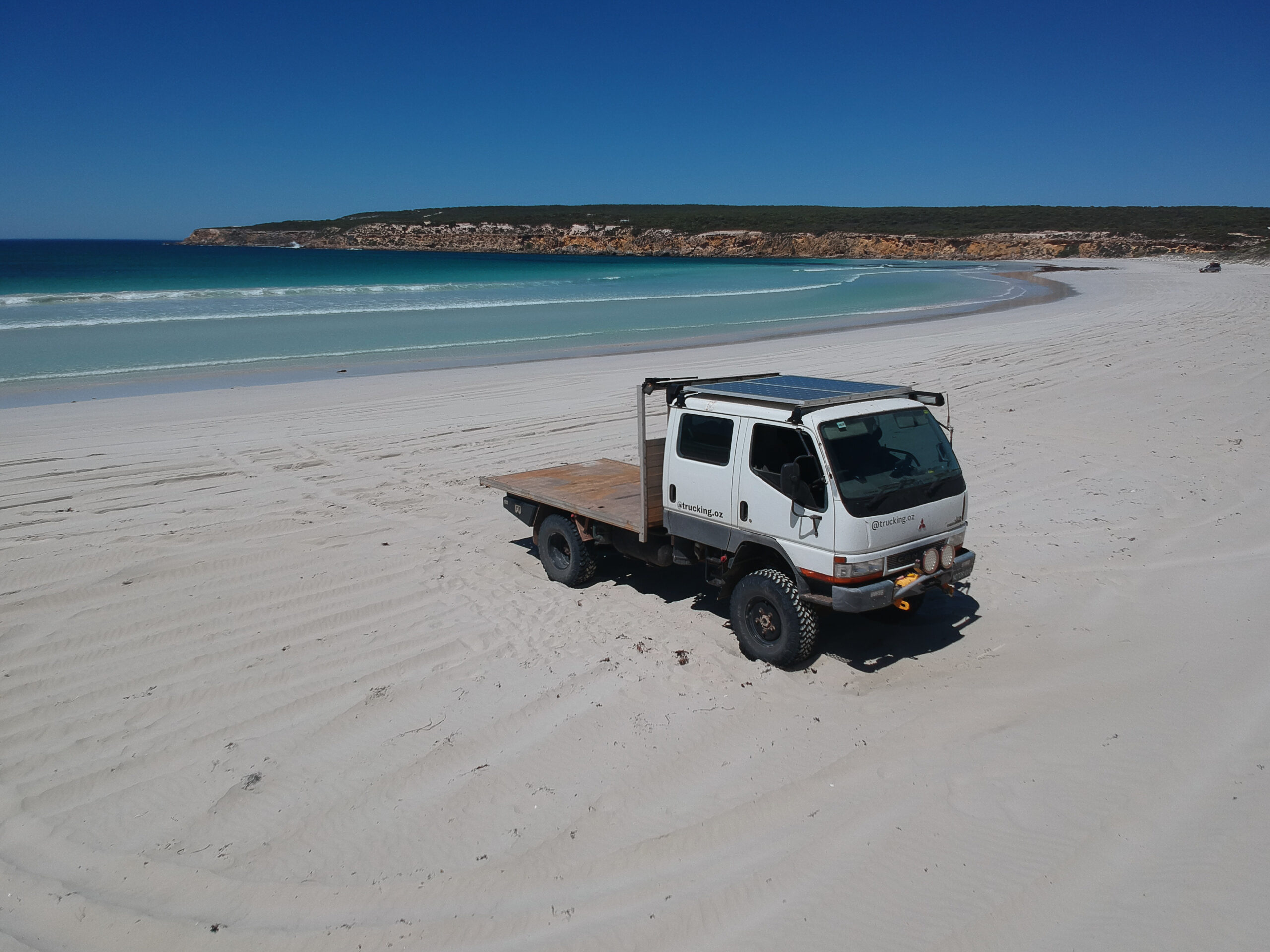
The Camper
It was built in my garage at home, and started life as a pile of raw aluminium, which I welded together with my father-in-law. I first designed the camper on paper, figuring out dimensions and what I needed to fit inside. I welded the frame, fitted out the interior, built the roof setup, wired the electrics, and did all the plumbing. Everything was done by myself, except the LPG system to run the burner and hot water; it needs to be signed off and safe. My father-in-law helped with the carpentry and did an amazing job. It’s so rewarding to build the camper from a pile of raw materials; I’m very proud of the build. It gets a lot of attention at campsites; people ask lots of questions and want to see the inside. In fact, I’ve considered building them for people when I return from this adventure; the interest is there, but whether they’ll put down a deposit is another matter.
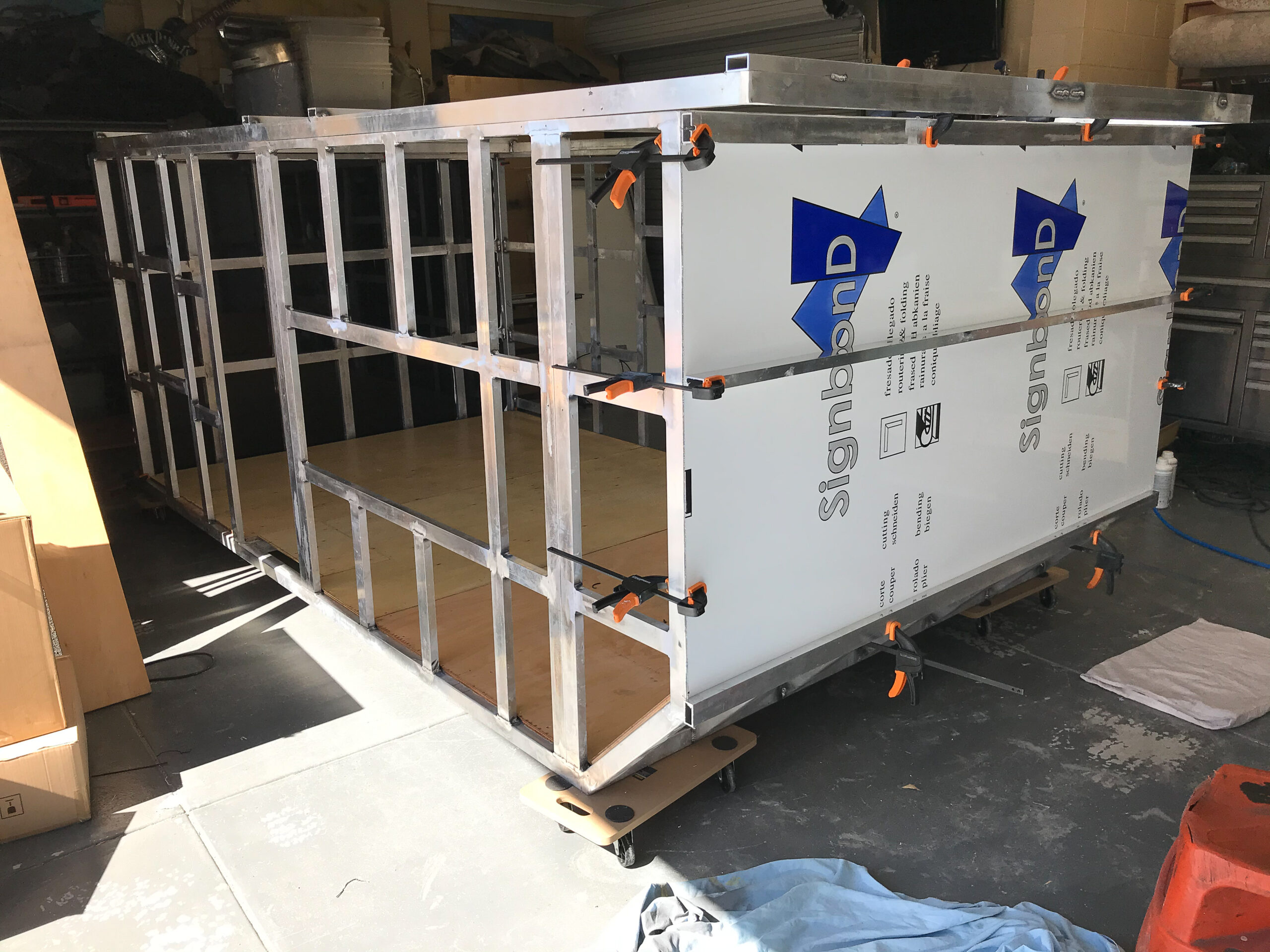
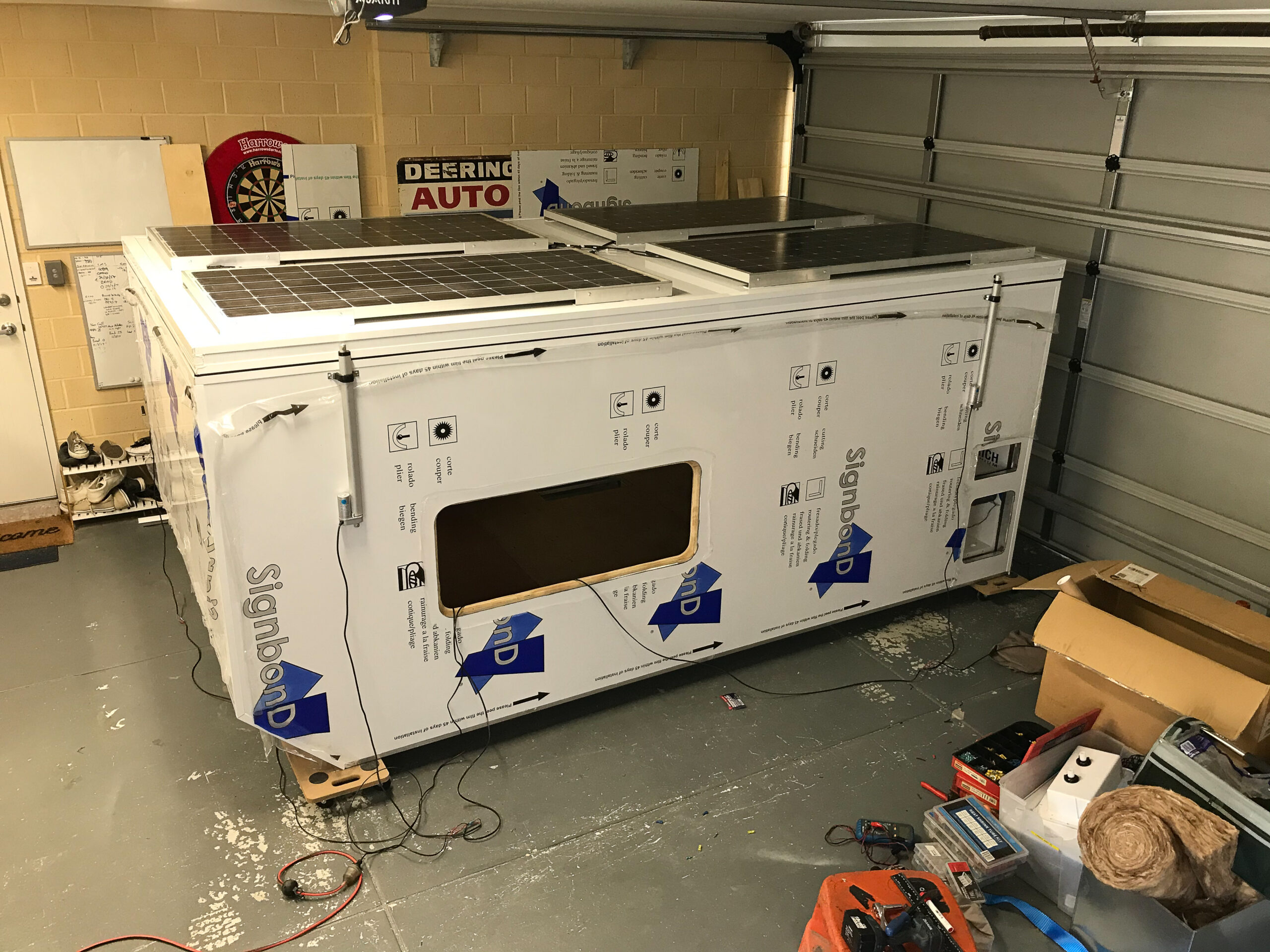
What were the reasons for opting for a demountable rather than a fixed habitation pod?
Towing a camper allows you to unhitch, go into town, complete daily chores or explore, whereas in a motorhome you have to take everything with you, and I desired the best of both worlds. I wanted to avoid towing, but at the same time, sought the versatility of the camper trailer. The demountable is completely self-sufficient when disconnected from the truck and has independent water and power. The truck also has its own fridge and 12-volt system. It’s great being able to leave the demountable at a camp spot, then explore 4×4 trails in the truck.
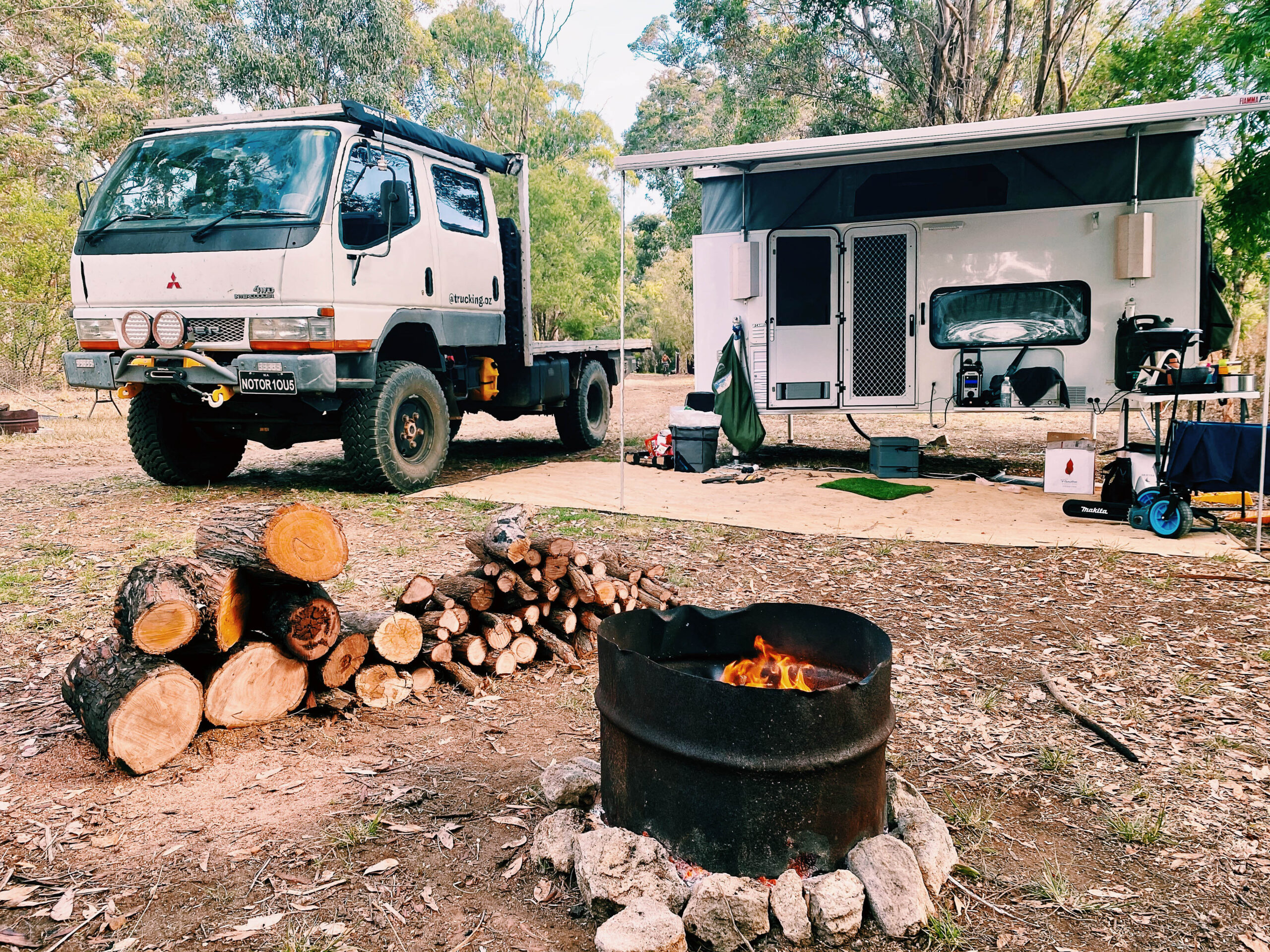
Basic Layout
We call the camper “The Pod,” and one of the key requirements was a king-sized bed for my wife and me, and it had to be north/south facing, so we didn’t have to climb over each other to get out. The kids required beds, and we wanted a shower, toilet, and kitchen. The king-size is up top, and the two kids’ beds are below. During the day, our bed lifts up, and the kids’ beds create a dinette (there’s a table that slots into place between them). The kitchen has both gas and induction burners; then we have a shower/toilet, or “shoilet” combo. We have air conditioning, a diesel heater, and even a washing machine under the kitchen bench. Honestly, that’s one of the best things we incorporated; we’ve done 10 loads in a day after being off-grid for a few weeks. We’ve saved a lot of money by washing our clothes in the camper rather than campsites. We currently have a chemical toilet, but I’ve certainly considered a composting alternative. I just didn’t like the idea of separating the waste (which you need to do with composting toilets), but it’s definitely the way to go when you’re off-grid. We have to empty our chemical toilet every three to four days, which isn’t ideal, but in Australia, we have lots of “dump” points, so it’s pretty straightforward.


Power
We have one 200ah lithium battery, but I’d like to fit a second one down the line. Initially, I assumed that the large amount of solar (1,160 watts) would be enough, but sometimes it catches us out. Additionally, we have a 240-volt to 12-volt charger, so if we plug into mains at a campsite, everything is compatible, and it’ll begin charging the leisure batteries and truck. If we like a campsite, we may stay a while, and in that case, it’s nice being hooked up to mains electricity and water, whilst charging all our batteries.

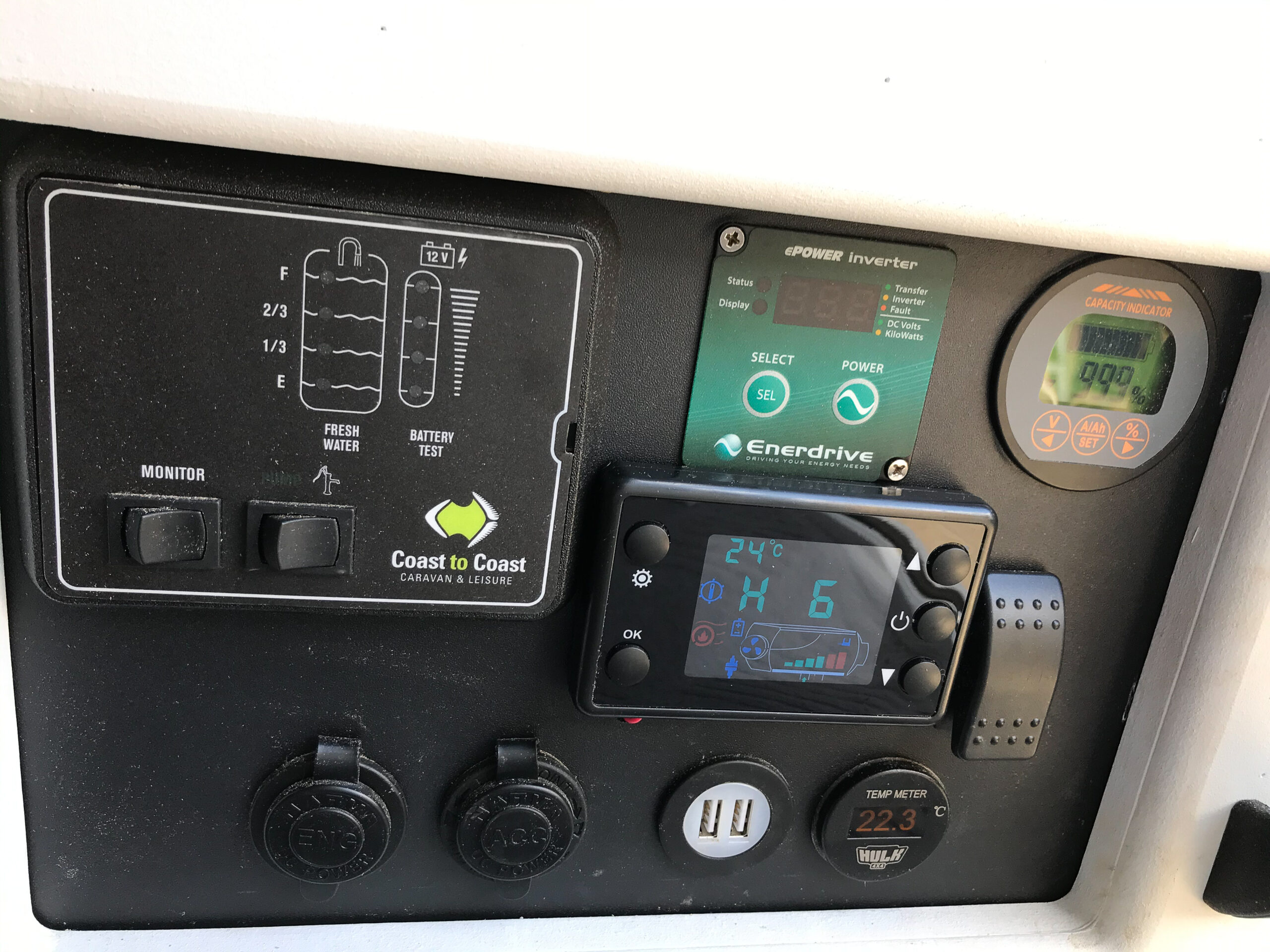
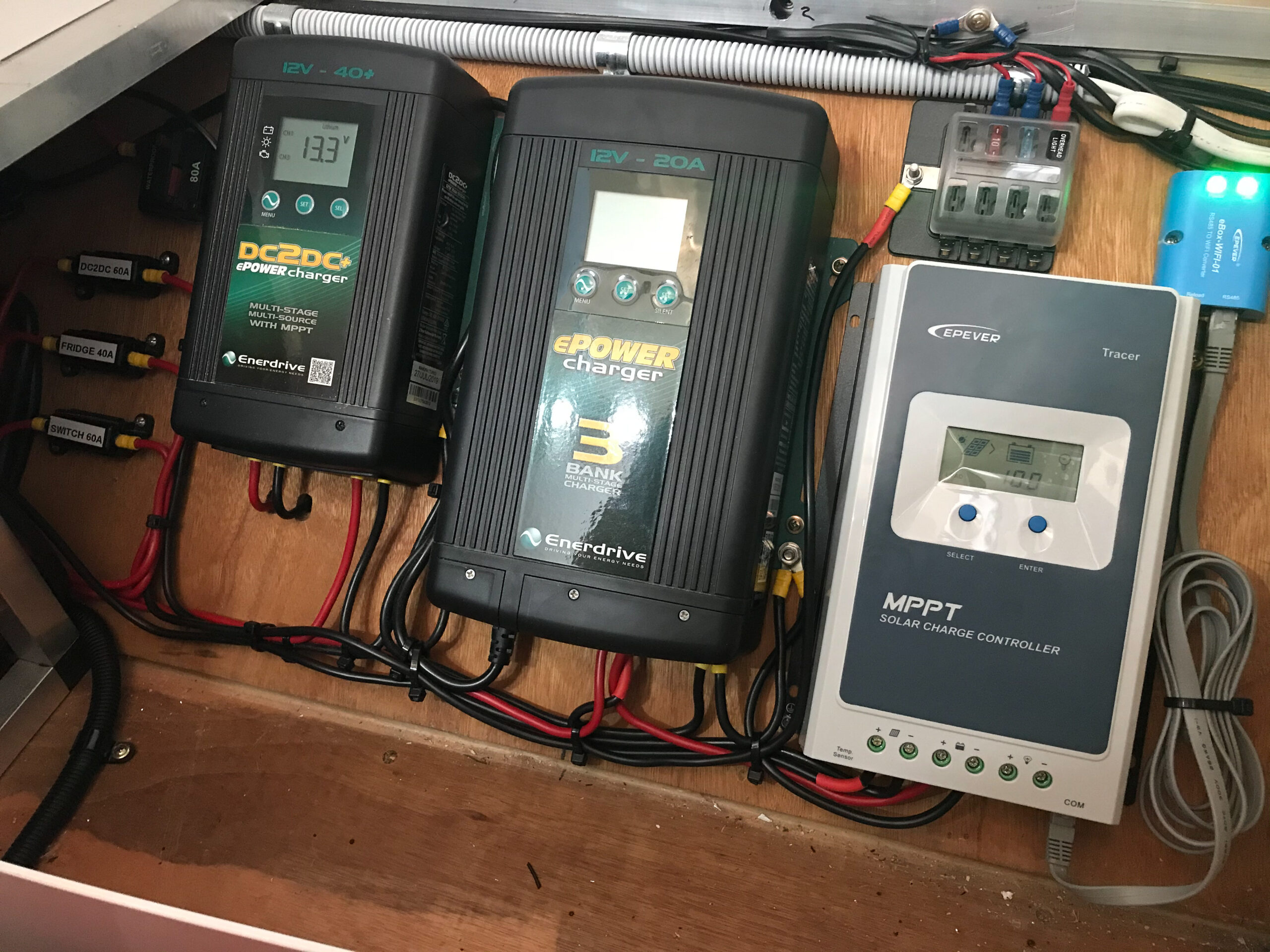
The only time we have issues with power is during periods with little sunlight. The problem here is that we tend to cook most in the evening, and the induction hob pulls around 150 amps out of the battery, so after dinner, the battery is pretty depleted but not dead. However, our 140-litre fridge/freezer and dedicated 15-litre freezer are both compressors, so cycle nonstop and continue to drain the battery. Consequently, in the morning there’s not enough power to cook breakfast, so I’d like another battery for that reason.
Recovery Gear
We’ve got a 17,000-pound winch up front, and a 12,000-pound winch at the rear, four MaxTrax, a snatch strap, a snatch block to double up the winch line if required, and a few shackles. The winches are our main insurance policy, and I can operate both from the dash, but I’ve rarely required any recovery gear. The truck is just so capable, and I know both the vehicle limitations and my own. We’ve done some pretty extreme tracks, and it’s made me look good! It’s unlikely that I’m going to get stuck, but if I do, then it’s going to be in a big way, and that’s when having both winches is important. There’s a Sherpa compressor that runs off a winch motor and has a 100-percent duty cycle that allows you to run air tools without needing an air tank. I built my own manifold set, mounted it under the cab, and incorporated easy connection points for each tire. This allows me to air down the front, rear, or all tires simultaneously whilst also being compatible with the rear airbags. This means I can air up or down quickly with the use of a dial, whilst everyone else is having to do each tire independently. I carry a lot of tools, so I know whatever happens, I can fix it on the road. That’s important with a custom build; after all, only you know how you built it.
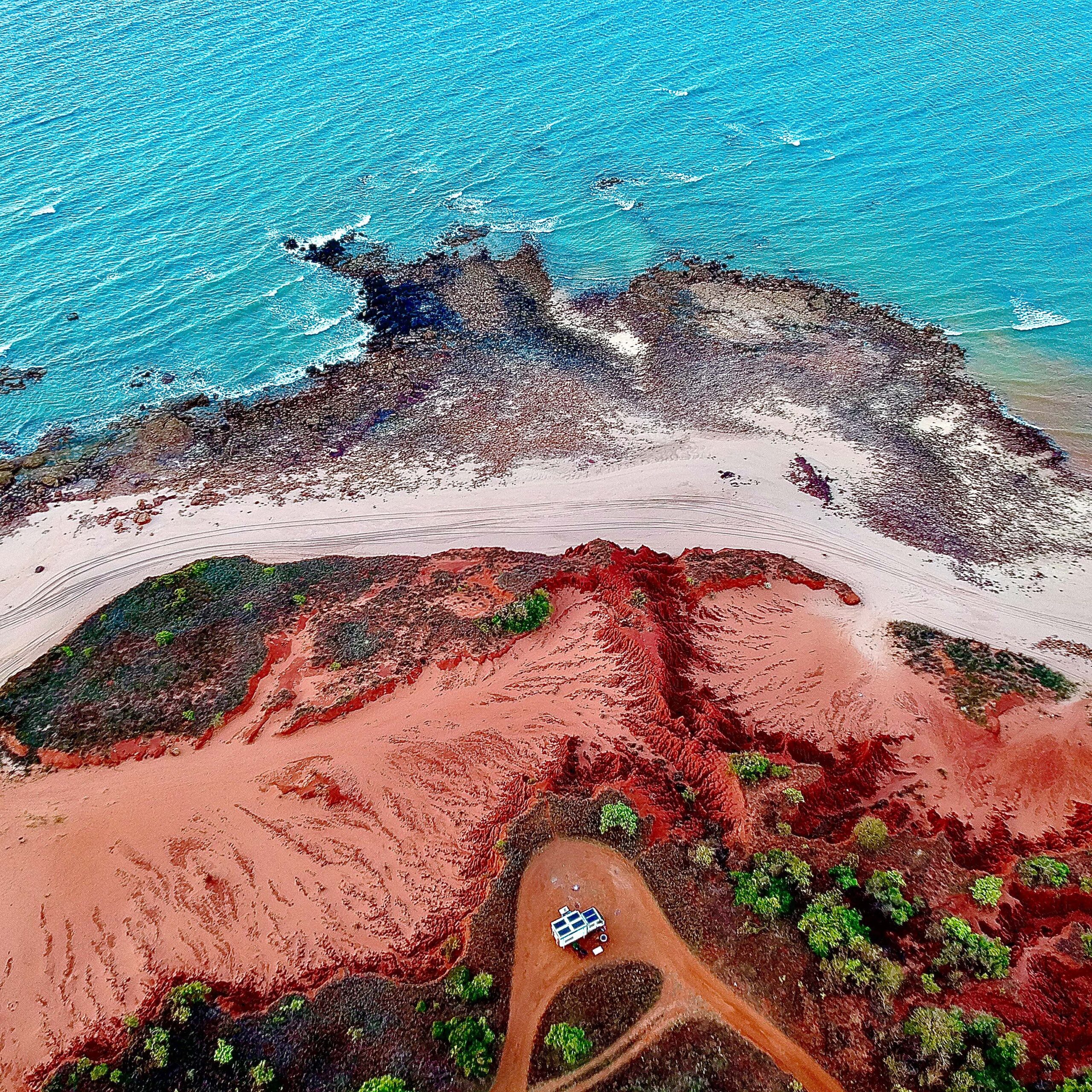
Anything you’d change in hindsight?
I’d flip the toilet and kitchen around because when you open the camper door, you can see into the bathroom, but it’s a minor annoyance. The second alteration would be the mechanical legs on the camper, which lower with a cordless drill. It was about $2,000 more to have the electric legs, but at the time, I couldn’t afford it, but I wish I could’ve done. It’s not terrible but takes around 35 minutes to remove/remount it. The third change would be the electric roof. I wanted to keep the roof profile as low as possible for clearance under trees and on narrow tracks, but this meant cramming all the lifting mechanisms inside was a nightmare. In hindsight, I would’ve bought a pre-manufactured extrusion for the roof, and that would’ve made everything easier.

What other vehicles take your fancy?
I’ve always wanted a Unimog. I did look at the older model, but it’s really basic, whereas the Canter is more of a compromise. The Unimog is pretty unstoppable off-road, but the newer models are crazy expensive.
Adventure
We’ve been travelling Australia for the past nine months, and we’re now in our fourth state. We’ve beach camped, explored the bush, travelled out to Kangaroo Island on a ferry, and more recently enjoyed a million-acre wilderness park in the Northern Territories (that last location is an off-roader’s dream). We’ve been living in the truck full-time and just seeing as much as we can. We recently did a safari, which included a helicopter ride, jet boats, seeing crocodiles—just amazing. We’re big on experiences, and we don’t skimp once we’re there. We have to budget, but we try not to miss out. We’re currently on the Queensland coast and booked on a cruise to the Great Barrier Reef with the kids. Then next week, we’re heading up to Cape York, which is the northernmost point of Australia. That will be a big tick on my bucket list because it’s very remote and offers some extreme 4WD routes. We didn’t manage the Simpson Desert crossing on the way up to the Northern Territories due to the pandemic, but hope to complete this route on our return. The Simpson Desert, along with Cape York, are my two biggest goals on this trip. We’ve done the Great Barrier Reef before, but not with the kids. On the West Coast, we did the Ningaloo Coast, which is arguably better than the Great Barrier Reef for scuba diving and snorkelling. We’ve done a lot in the past nine months, but we’ve also accepted that we can’t do everything. I think it’s important to recognise you’ll never do it all on your first lap, and cramming will ruin the experience.
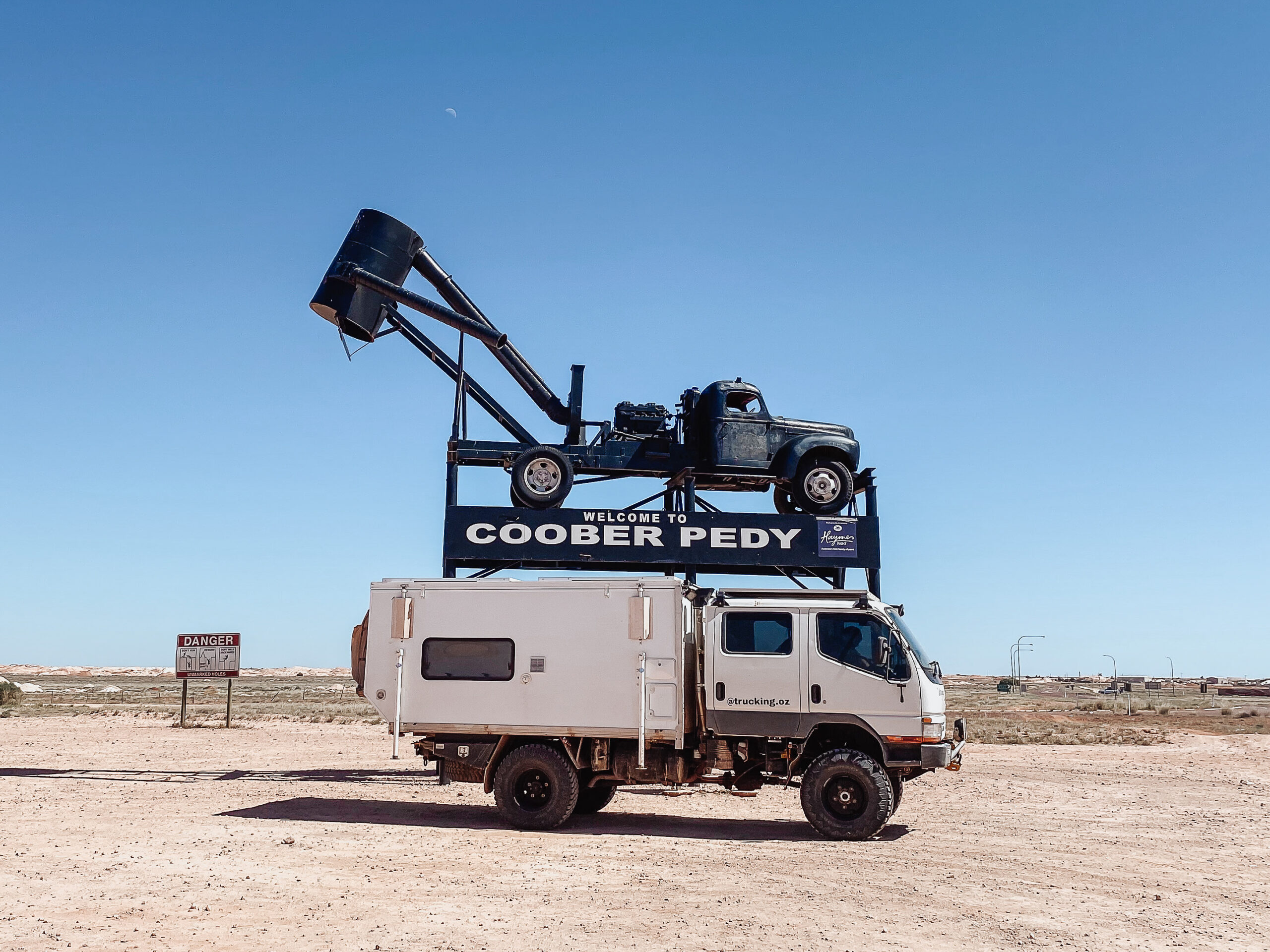
Any advice for travelling with young children?
You need to be flexible and not plan everything in advance. Go with the flow. Sometimes you’ll be in a beautiful location and can’t wait to explore, but the kids are just wiped, so you take the day to let them recharge. It’s important to respect that.
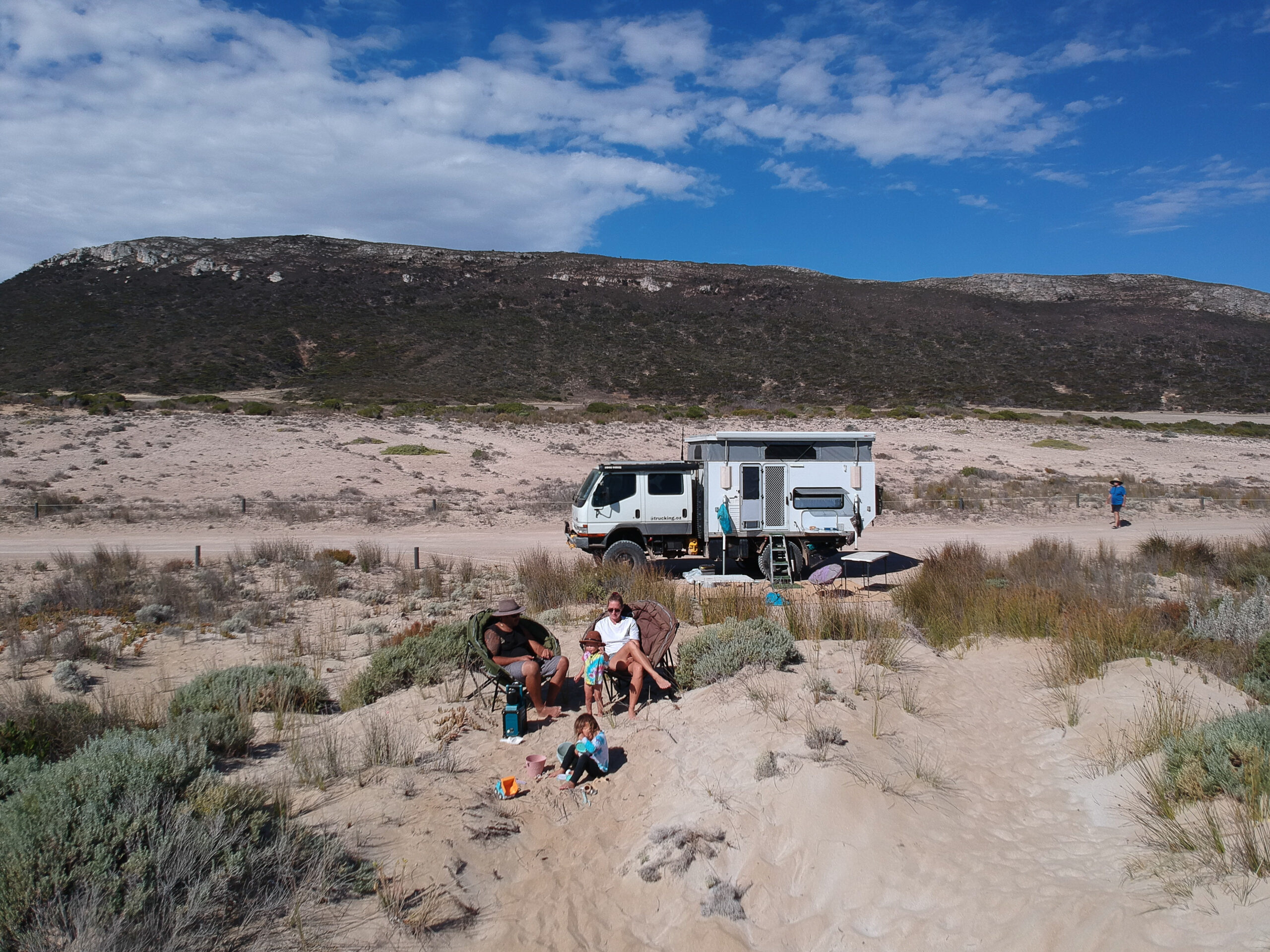
How does it feel to share these experiences with your kids?
It’s amazing; my wife absolutely loves spending every moment with them, even if sometimes they drive you nuts. The downside of long-term travel is missing family, but both sets of grandparents have flown out to spend time with us. That said, the lifestyle is just epic. A lot of people wait until they retire, but they’re missing out on experiencing travel with their children. I think it helps to mould their future, and I love watching them enjoy and appreciate nature. I truly believe this experience will play a positive role in their development.
Plans for the future?
Going back home will have its pros/cons, but my wife misses it. We want to travel again, and if the opportunity came up to do this full-time whilst making a living, we’d jump at the chance. First, we need to return, work, and figure things out.
Overland wisdom?
Just do it, and make it work. A lot of people asked how we’d make this trip possible? How are we going to pay for everything? Have you saved up enough? There’s never going to be a perfect scenario where everything lines up, but if you want it bad enough, you’ll make it happen. We have friends who’ve saved up for years to do a trip like this and still haven’t gone. Meanwhile, we didn’t have the same kind of savings, but we just went for it. I told my wife, Lindsey, “If I have to stop somewhere and work a few months, then so be it.”

Where can we find you?
Instagram: @trucking.oz
Youtube: Trucking OZ
Specifications
2006 Mitsubishi Canter 4×4 FG649
Power
4d34t 3.9L 4-cylinder turbo-diesel
Suspension and Drive
Front custom made parabolic leafs
Rear heavy-duty raised conventional leafs with airbags
3-way adjustable 2.5-inch remote reservoir Dobinsons shocks all round
5-speed manual transmission
Hi-/low-range transfer case
Front diff standard open centre
Rear diff standard LSD
Wheels and Tires
17-inch AAV4X4 super single rims
Hankook Dynapro 37/12.5R17 MT tyres
Recovery and Armor
Custom-made front bull bar
Sherpa 17,000-pound front winch
Dominator 12,000-pound rear winch
Beaudesert 4-inch stainless snorkel
MaxTrax MKII recovery tracks
Full heavy-duty recovery kit
Makita 36-volt electric chainsaw
Accessories
Truck:
Dual-battery system
Big Red LED spotlights
Sherpa BigAir onboard air compressor
Dometic 35-litre chest fridge
Ipad mini with Hema maps
Tyre pressure monitoring system
High-end audio system
Reverse camera
Dash camera
Cel-fi phone signal booster
10 x USB outlets
GPS emergency locating beacon
Camper:
King-size master bed
Two single beds
Dometic 140-litre upright fridge
Brass Monkey 15-litre freezer
Narva LED lighting
Dometic gas cooktop
Portable induction cooktop
Reverse cycle air conditioner
Camec 2.5-kilogram washing machine
Camec instant gas hot water system
1,340-watt solar system (1,140-watt fixed, 200-watt portable)
Enerdrive 200Ah lithium battery
Enerdrive 2,000-watt inverter
Enerdrive DC2DC 40A charger
Enerdrive AC/DC charger
Diesel air heater
3 x Sirocco fans
12 x USB outlets
TV with Xbox
Inside toilet/shower
Outside shower
Fuel Capacity
300 litres
Water Capacity
255-litre (75-litre truck, 180-litre camper)
Weight
Approximately 5,800 kilograms, fully loaded
References
OZ Auto Solutions
Our No Compromise Clause: We carefully screen all contributors to make sure they are independent and impartial. We never have and never will accept advertorial, and we do not allow advertising to influence our product or destination reviews.


